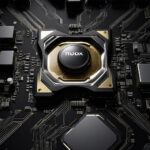In a recent turn of events in the competitive smartphone market, Apple’s iPhone 16 has failed to ignite the enthusiasm expected from its loyal fanbase. While Apple has long been synonymous with cutting-edge technology and user experience, its latest offering appears to be stumbling under the weight of high expectations and a notable lack of innovation. In stark contrast, Huawei’s Mate XT smartphone is making waves, garnering over 4 million pre-orders and establishing itself as a formidable contender in the high-end market.
The iPhone 16’s launch showcased its anticipated AI features, but many of these capabilities remain in beta testing. This has led to disappointment among consumers, particularly in China, where tech enthusiasts were looking forward to features that have yet to be fully deployed. Following the release, Apple’s stock dipped by 1.7%, an indication that investors are concerned about the iPhone’s capability to maintain its market position against rivals like Huawei.
Huawei’s Mate XT, priced at $2,800, is touted for its revolutionary tri-fold design and its advanced AI capabilities, which have been widely praised in tech circles. The device’s immense pre-order figures signal a robust demand, underscoring Huawei’s successful re-entry into the global market after previous sanctions. Reports indicate that the Mate XT not only meets but exceeds the expectations set by today’s technology landscape, particularly regarding design innovation and feature set.
The competition between these two tech giants is more than just a fight for market share; it represents differing approaches to innovation and market responsiveness. Apple’s strategy has focused on refining existing technologies and ensuring ecosystem integration, yet this may no longer suffice in a market where consumers demand groundbreaking advancements. On the other hand, Huawei appears to be capitalizing on this gap by delivering innovations that resonate well with consumer desires.
Additionally, Huawei’s resurgence illustrates how geopolitical factors can influence market dynamics. After facing challenges from US-imposed sanctions, Huawei’s strategic pivot has showcased resilience. The brand’s ability to draw in consumers amid increasing iPhone sales declines in China poses a significant challenge for Apple. This prolonged battle for dominance highlights not only technological advancements but also branding strategies that resonate with target demographics.
Furthermore, analysts predict that if Huawei continues to deliver strong products and maintain customer interest, it could disrupt Apple’s stronghold in the high-end smartphone market. While iPhone users remain dedicated to the Apple ecosystem, the allure of Huawei’s features could entice new users seeking innovative alternatives. The stakes are particularly high as both companies strategize for the rapidly approaching holiday season, traditionally a pivotal time for smartphone sales.
Looking ahead, Apple faces an urgent need to reassess its innovation strategies to recapture consumer enthusiasm. The current market sentiment urges a shift from incremental updates towards more substantial advancements that stand out in a saturated market. Drawing lessons from Huawei’s success, Apple must explore unique features that cater to evolving consumer needs and technological trends.
For consumers, the choice between Apple’s familiarity and Huawei’s innovation represents a crucial crossroads. As competition escalates, it will indeed provide an opportunity for enhanced technology offerings that could benefit users globally. Whether Huawei’s advancements will yield sustained success remains to be seen; however, its current momentum positions it as a nearly credible rival to Apple.
Ultimately, the battle between iPhone and Huawei is not just about hardware and software; it is a reflection of consumer sentiment and market adaptability in a fast-paced technological ecosystem. As such, businesses, stakeholders, and consumers alike should keep a close watch on how these advancements reshape the future of smartphones.












